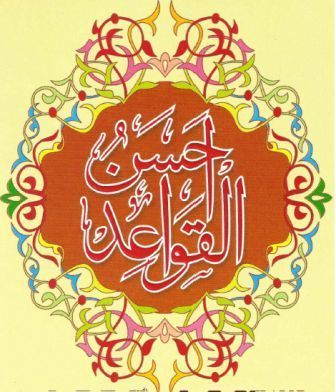DURUSULQUR’AN LESSONS OF QUR’AN
LEARN TO READ AND RECITE NOBEL QUR'AN
دُرُوْسُ الْقُرْآنِ
INTRODUCTION:
English
DurusulQur’aan, a fully interactive QUR’AN reading course, has been designed to aid in learning to read and to recite the Nobel QUR’AN using Arabic text. This course has been developed for both for the Internet and home study for Mankind in various formats. So far the translation of the course instruction has been into French and Spanish.
History of the course development:
Internet version using java script released in 1998
Printed version of this booklet with sound released in 2003
Interactive version developed in Adobe Flash released in 2006
Interactive version developed in HTML5 programming for all platforms including mobile devices 2016
Even though this is an independent learning course, we encourage the users to approach someone well versed in the recitation of the QUR’AN. In addition to the self-learning lessons, we feel that reading to and being corrected by an expert is the ultimate way to ensure correct pronunciation and recitation.
This course includes learning the Arabic alphabet and its shapes, connecting two or more letters, vowels signs; basic "Tajweed" rules (the correct pronunciations of letters, points of articulation, - attributes etc. and much more. While ideally suited for the beginner, this course offers insight and support for the intermediate and advanced learners as well. Lastly, this course is not designed to provide instruction for the translation or explanation of the Nobel QUR’AN; such a study would require a comprehensive knowledge of Arabic vocabulary and grammar and it is beyond the scope of our intended purpose. Also this course may not be sufficient for those who want to learn to read Arabic text other than the Nobel QUR’AN.
The course is based on "AHASANUL-QAWAID" اَحَسَنٌ الْقَواعِدْ compiled by Late Moulana Shamsudin Barodwee (r.a) , India. This method of learning is widely used in non-Arab countries such as the sub-continent of India, Pakistan, and Bangladesh, Central and south East Asia. The Nobel QUR’AN printed in these regions (Ajmi edition), employs mostly ‘Nastaleeq style (font), the letters are generally large, bold and rounded. The words are clearly separated and marked and vowels signs are accurately placed over or under the letters. Another popular printed copy, widely distributed and mainly used by the middle-east population is the “Medina edition, which use Naskh style slightly differs in the diacritical marking system, however, both use the Qiraat (recitation) learned from Imam Hafs. Some differences in diacritical marking is explained in a Annex D
This course consists of over fifty - (50) lessons which available in variety of formats including mobile first version.
http://www.jariya.ca/katiya/qaida/index.html
www.learnquran.ca
http://www.as-sidq.org/durusulQuran/DurusulQuran.html
Publisher: Katiya Academy Montreal Canada Email: katiyaacademy@gmail.com
Research and Layout : Mohammed Siddique Katiya, Canada
Sound: Sheikh Muhammed Mangera (Canada)
Consultation and editing: Sheikh Aasim Rashid (Canada)
All rights reserved, Free Copying of this course is permitted for personal use only. For commercial distribution and other inquiry please contact the publisher.
Updated March 10, 2016 version 5.00
Urdu
French
